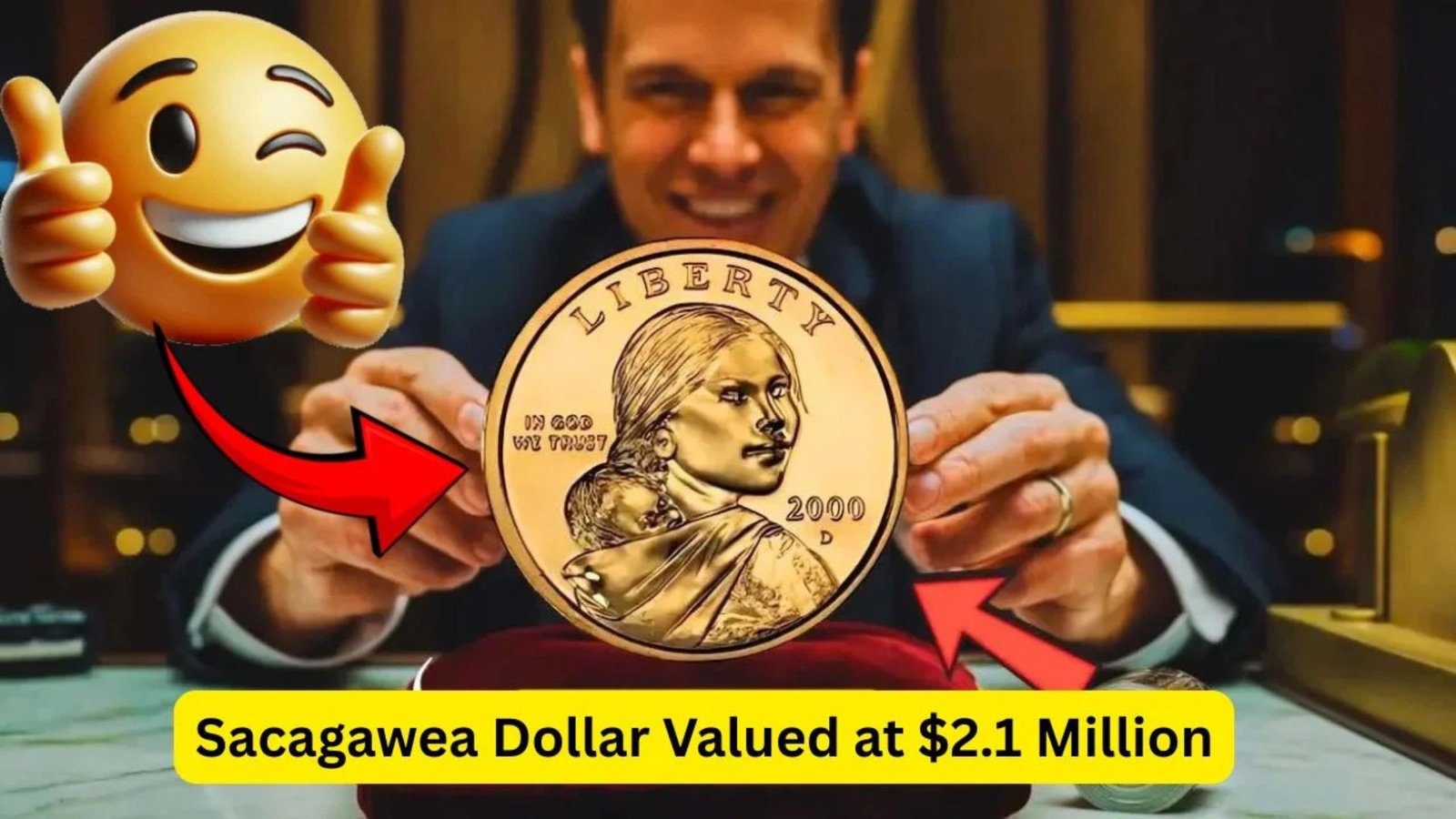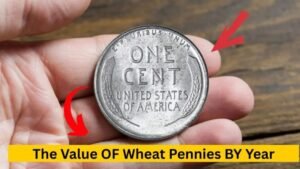Have you ever wondered if the coins in your pocket could be worth a fortune? The Sacagawea dollar, first minted in 2000, is a golden-colored coin that honors a Native American woman who helped explorers Lewis and Clark. While most of these coins are worth just $1, a rare version could be valued at an incredible $2.1 million! This guide will teach you how to identify this rare coin, explain why it’s so valuable, and share tips on where to find it. With simple steps and easy-to-understand details, you’ll be ready to start your treasure hunt. Let’s dive in!
What Is the Sacagawea Dollar?
The Sacagawea dollar is a U.S. coin introduced in 2000 to replace the unpopular Susan B. Anthony dollar. It features Sacagawea, a Shoshone woman who guided the Lewis and Clark Expedition from 1804 to 1806, helping them explore new lands that became part of the United States. The coin’s front (obverse) shows Sacagawea carrying her baby, Jean Baptiste, while the back (reverse) originally displayed a soaring eagle with 17 stars, symbolizing the states during the expedition. Since 2009, the reverse design has changed yearly to celebrate Native American history and culture.
The coin’s golden color comes from a copper core coated with manganese brass, making it stand out from other coins. Over 1 billion Sacagawea dollars have been minted, but a few rare versions with unique errors or special features make them highly valuable to collectors.
Why Is the Rare Sacagawea Dollar Worth $2.1 Million?
The $2.1 million Sacagawea dollar is special because of a rare minting mistake called a “mule error.” This happens when two different coin designs are accidentally combined. In this case, the front of the coin shows George Washington (from a quarter) instead of Sacagawea, while the back has the Sacagawea dollar’s eagle design. This error occurred in 2000 at the Philadelphia Mint due to a mix-up with the coin dies. Only about 20 of these mule error coins are known to exist, making them incredibly rare. One sold for $2.1 million in 2025, setting a record for modern U.S. coin errors.
Another valuable version is the “Cheerios Dollar,” part of a 2000 promotion where the U.S. Mint placed 5,500 coins in Cheerios cereal boxes. These coins have extra-detailed eagle tail feathers, making them stand out from regular Sacagawea dollars. A Cheerios Dollar in perfect condition can be worth tens of thousands, with some estimates suggesting even higher values today.
How to Identify the Rare Sacagawea Dollar
Spotting a rare Sacagawea dollar requires careful inspection. Here’s a step-by-step guide to help you check your coins:
Step 1: Check the Year and Mint Mark
- Year: Most rare Sacagawea dollars are from 2000, when the mule error and Cheerios Dollars were made.
- Mint Mark: Look for a small “P” (for Philadelphia Mint) near Sacagawea’s neck or George Washington’s neck on the front. Most mule errors and Cheerios Dollars have this mark.
Step 2: Examine the Front (Obverse)
- Mule Error: Look for George Washington’s face instead of Sacagawea. This is the key feature of the $2.1 million coin.
- Cheerios Dollar: The front should show Sacagawea with her baby, just like regular coins, but check the reverse for unique details.
Step 3: Inspect the Back (Reverse)
- Mule Error: The back should have the eagle design from a Washington quarter, not the Sacagawea eagle with 17 stars. The quarter design says “United States of America” and “Quarter Dollar.”
- Cheerios Dollar: Use a magnifying glass to check the eagle’s tail feathers. They should have sharper, more detailed lines compared to regular coins, which have flatter feathers.
Step 4: Weigh the Coin
- Mule Error: These coins weigh about 5.67 grams, like a quarter, instead of the standard 8.1 grams for a Sacagawea dollar. Use a precise coin scale.
- Cheerios Dollar: These weigh the standard 8.1 grams but may have a shinier finish.
Step 5: Check the Edge and Color
- Edge: Mule error coins have a plain edge, like regular Sacagawea dollars. Check for any unusual markings or errors.
- Color: Look for a golden tone. Some rare errors may have slightly different colors due to improper alloy mixing.
Step 6: Look for Other Errors
- Wounded Eagle Error: Some 2000 Sacagawea dollars have a mark near the eagle’s chest that looks like a spear wound, caused by a scratch on the minting tool. These can be worth $5,000 or more.
- Off-Center Strikes: If the design is misaligned, it could be valuable.
- Proof or Satin Finishes: Coins with a mirror-like or smooth finish are rarer and often worth more.
Where to Find Rare Sacagawea Dollars
Rare Sacagawea dollars could be hiding in everyday places. Here are some spots to check:
- Pocket Change: Examine golden dollar coins you get from stores, vending machines, or small businesses.
- Coin Rolls from Banks: Ask your bank for rolls of dollar coins, as rare ones might be mixed in.
- Old Coin Jars: Look through family coin collections or jars, especially from around 2000.
- Vending Machines: Some mule errors were used in vending machines in 1999–2000 for testing.
- Old Cereal Boxes: If you have unopened Cheerios boxes from 2000, they might contain a Cheerios Dollar.
What to Do If You Find a Rare Coin
If you think you’ve found a rare Sacagawea dollar, follow these steps to protect its value:
- Don’t Clean It: Cleaning can scratch the coin and lower its worth. Handle it by the edges and store it in a plastic coin holder.
- Get It Authenticated: Take it to a professional coin grading service like PCGS (Professional Coin Grading Service) or NGC (Numismatic Guaranty Company). They’ll verify if it’s a mule error, Cheerios Dollar, or another rare type and grade its condition.
- Consult a Coin Dealer: A reputable dealer can help you appraise and sell the coin through auctions or private sales.
- Store It Safely: Keep the coin in a safe place to avoid damage while awaiting authentication.
Key Features of Rare Sacagawea Dollars
| Feature | Mule Error ($2.1 Million) | Cheerios Dollar | Wounded Eagle Error |
|---|---|---|---|
| Year | 2000 | 2000 | 2000 |
| Mint Mark | “P” (Philadelphia) | “P” (Philadelphia) | “P” (Philadelphia) |
| Obverse (Front) | George Washington | Sacagawea with baby | Sacagawea with baby |
| Reverse (Back) | Washington quarter eagle | Eagle with enhanced tail feathers | Eagle with spear-like mark on chest |
| Weight | 5.67 grams | 8.1 grams | 8.1 grams |
| Value | Up to $2.1 million | Up to $25,000+ | Up to $5,000+ |
| Rarity | ~20 known examples | ~5,500 produced | ~100 known examples |
Why Are These Coins So Valuable?
The value of rare Sacagawea dollars comes from their scarcity, historical significance, and collector demand. The mule error is a one-of-a-kind mistake, with only a handful of coins escaping the mint. The Cheerios Dollar is rare due to its limited promotional release and unique design. Additionally, these coins tell a story of American history, honoring Sacagawea’s role in the Lewis and Clark Expedition, which adds to their appeal. Collectors are willing to pay high prices for coins in pristine condition, especially those authenticated by trusted grading services.
Tips for Coin Collectors
- Join Coin Clubs: Connect with local or online coin collecting groups for tips and resources.
- Use a Magnifying Glass: A 10x loupe helps spot tiny details like feather patterns or errors.
- Learn About Errors: Familiarize yourself with common minting errors like doubled dies or off-center strikes.
- Stay Updated: Follow numismatic news and auction results to track valuable coins.
- Beware of Fakes: Always verify with a professional to avoid counterfeit coins.
FAQ: Rare Sacagawea Dollar Questions
Q: What makes the Sacagawea dollar worth $2.1 million?
A: The $2.1 million version is a mule error from 2000, with George Washington’s face on the front and a Washington quarter eagle on the back, making it extremely rare.
Q: Are all Sacagawea dollars valuable?
A: No, most are worth $1 unless they have rare errors like the mule error, Cheerios Dollar, or wounded eagle.
Q: Where can I find a rare Sacagawea dollar?
A: Check pocket change, coin rolls from banks, old coin jars, vending machines, or unopened 2000 Cheerios boxes.
Q: How do I know if my coin is real?
A: Have it authenticated by a professional grading service like PCGS or NGC to confirm its authenticity and value.
Q: Can I clean my Sacagawea dollar to make it worth more?
A: No, cleaning can damage the coin and reduce its value. Keep it in its original condition.
Q: Where can I sell a rare Sacagawea dollar?
A: Sell through reputable auction houses, coin dealers, or online collectible markets after authentication.
Recent Discoveries and News (2025)
In July 2025, a Denver convenience store worker found a 2000-P Sacagawea mule error in a cash register, valued at $2.1 million, sparking a new wave of interest in coin collecting. Coin forums and social media are buzzing with collectors sharing tips and reporting potential finds. Experts believe more rare coins could still be in circulation, especially in bank rolls or old collections. The $2.1 million sale in October 2025 set a record for modern U.S. coin errors, making the Sacagawea mule one of the most sought-after coins today.
Conclusion
The Sacagawea dollar is more than just a coin—it’s a piece of American history with the potential to be a life-changing treasure. By knowing what to look for, like the mule error’s George Washington face or the Cheerios Dollar’s detailed tail feathers, you can turn pocket change into a fortune. Use a magnifying glass, check the weight, and examine the design carefully. Whether you’re a seasoned collector or just curious, the thrill of finding a $2.1 million coin is worth the effort. Start checking your coins today—you never know when you might uncover a hidden gem





1 thought on “How to Spot the Rare Sacagawea Dollar Worth $2.1 Million”